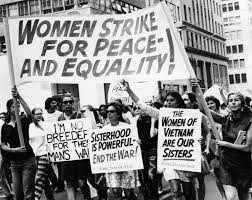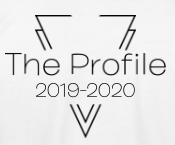March Movement: Women’s History Month

https://people.com/human-interest/womens-history-month-facts-explainer/
Explore the history of Women’s History Month and why it is important.
March 28, 2022
March is all about empowerment and equality. Women’s History Month goes way back to before it was even officially established in 1987. Here is why it is celebrated and how you can participate in it. I will be pointing out some of the most impactful moments in women’s history and the current status of this movement.
The roots of female empowerment in America dates way back to the Seneca Falls Convention on July 19-20, 1848 in Seneca Falls, New York. This was the first official women’s rights convention and was held at the Wesleyan Church. Some notable attendees included Elizabeth Cady Stanton, Lucretia Mott, Susan B. Anthony, William Lloyd Garrison, and Frederick Douglass, the revered abolitionist. These were the first activists that truly sparked the women’s rights movement.
This movement continued and grew, and on August 18, 1920 history forever changed when the Nineteenth Amendment was passed. This amendment gave women the full and complete right to vote; a right long overdue.
However the fight for rights didn’t stop there. Alice Paul made it her life’s goal to get the passage of the Equal Rights Amendment. She proposed it in 1943 with, “Equality of rights under the law shall not be denied or abridged by the United States or by any state on account of sex.” This amendment was ratified in the 1970s and has since been extended to today.
International Women’s Day was first pitched on March 8th 1910 by Clara Zetkin, a German activist, during the International Conference of Working Women, and exactly a year later it was officially celebrated in Austria, Switzerland, Germany, and Denmark. This day was not recognized in the United States until the United Nations adopted it in 1975.
The history of Women’s History Month sparked from the creation of a Women’s History Week in 1978. During this year, an Education Task Force for the Sonoma County Commission on the Status of Women spearheaded a “Women’s History Week” for this portion of California. This week inspired The Women’s History Institute at Sarah Lawrence College in 1979 to mirror the celebrations of women’s history and they committed to gaining a “National Women’s History Week.” A main figure of this movement was high school history teacher Molly Murphy MacGregor who wanted to get more of the history of women in textbooks and curriculums.
In February of 1980, President Jimmy Carter responded to the requests and proclaimed the week of March 8th National Women’s History Week. Accompanying his Presidential Proclamation, President Carter mentioned, “Too often the women were unsung and sometimes their contributions went unnoticed. But the achievements, leadership, courage, strength and love of the women who built America was as vital as that of the men whose names we know so well.”
The women’s rights movement has definitely grown from there. The National Women’s History Alliance, co-founded by Molly Murphy McGregor, helped contribute to a nation-wide lobbying campaign to gain public support and state approval for not only a National Women’s History Week, but an entire month dedicated to the cause of female empowerment. In 1987, Public Law 100-9 was passed by Congress, creating a National Women’s History Month.
Each year, International Women’s Day (March 8th) has a theme to honor female leaders and guide the current movement forward. The theme for International Women’s Day 2022 is #BreakTheBias. The organization notes that bias can serve as a roadblock to the advancement of women in society and beyond and that action needs to be taken to combat bias.
Today we see wonderful leaders and advocates of women’s rights in the new Supreme Court nominee Ketanji Brown Jackson, the first female Vice President of the United States, Kamala Harris, the USWNT winning equal pay, and so much more. But these leaders were inspired by the leaders before them, and those inspired by the ones who came before them, this is why we need to learn about women’s history.
Women’s rights and women’s history go hand in hand, and it is vital to the entire world that all people are properly represented and remembered. All the way back at the Seneca Falls Convention, Stanton and more recognized that it was time to take down the patriarchy, and that happens by acknowledging the history of women and recognizing that it needed to change.
Sources:
“19th Amendment to the U.S. Constitution: Women’s Right To Vote (1920).” National Archives and Records Administration, National Archives and Records Administration, https://www.archives.gov/milestone-documents/19th-amendment.
“About International Women’s Day.” International Women’s Day, https://www.internationalwomensday.com/about.
Andrea Wurzburger Updated March 01, 2022 02:15 PM. “Women’s History Month: How It Started, Why We Celebrate in March and More Questions Answered.” PEOPLE.com, https://people.com/human-interest/womens-history-month-facts-explainer/.
Congress, The Library of, et al. Women’s History Month, https://womenshistorymonth.gov/.
“Equal Rights Amendment.” Alice Paul Institute, https://www.alicepaul.org/equal-rights-amendment-2/#:~:text=Paul%20rewrote%20the%20proposed%20amendment,state%20on%20account%20of%20sex.%E2%80%9D.
“’I Helped Start Women’s History Month over 40 Years Ago. Here’s Why It Matters’.” ABC News, ABC News Network, https://abcnews.go.com/GMA/News/helped-start-womens-history-month-40-years-ago/story?id=76380142.
“Why March Is National Women’s History Month.” National Women’s History Alliance, 11 Feb. 2019, https://nationalwomenshistoryalliance.org/womens-history-month/womens-history-month-history/#:~:text=In%201987%2C%20Congress%20declared%20March,extraordinary%20achievements%20of%20American%20women.&text=President%20Jimmy%20Carter’s%20Message%20to,as%20National%20Women’s%20History%20Week.

